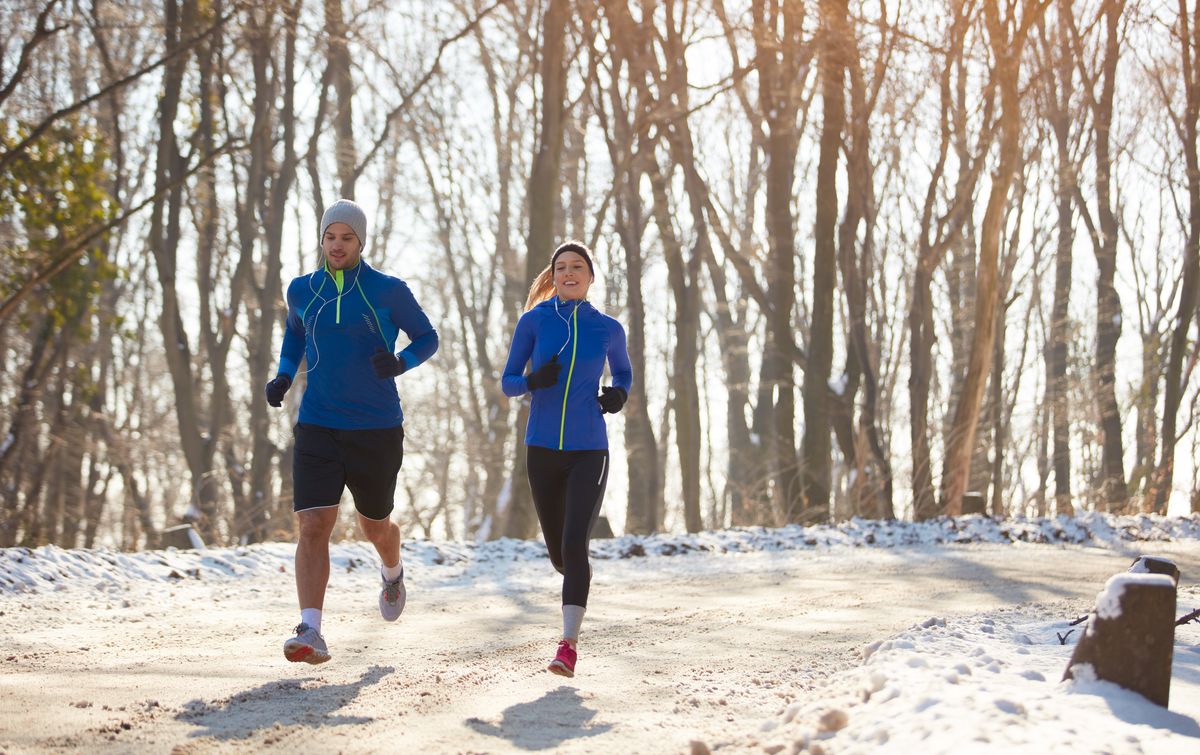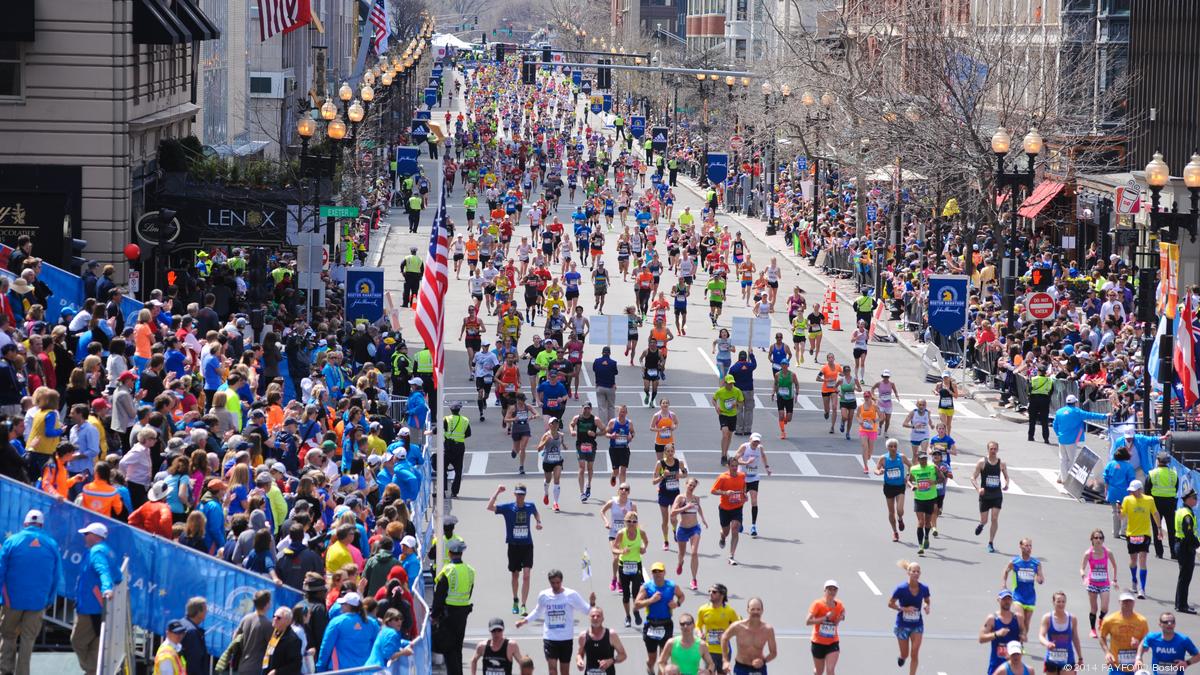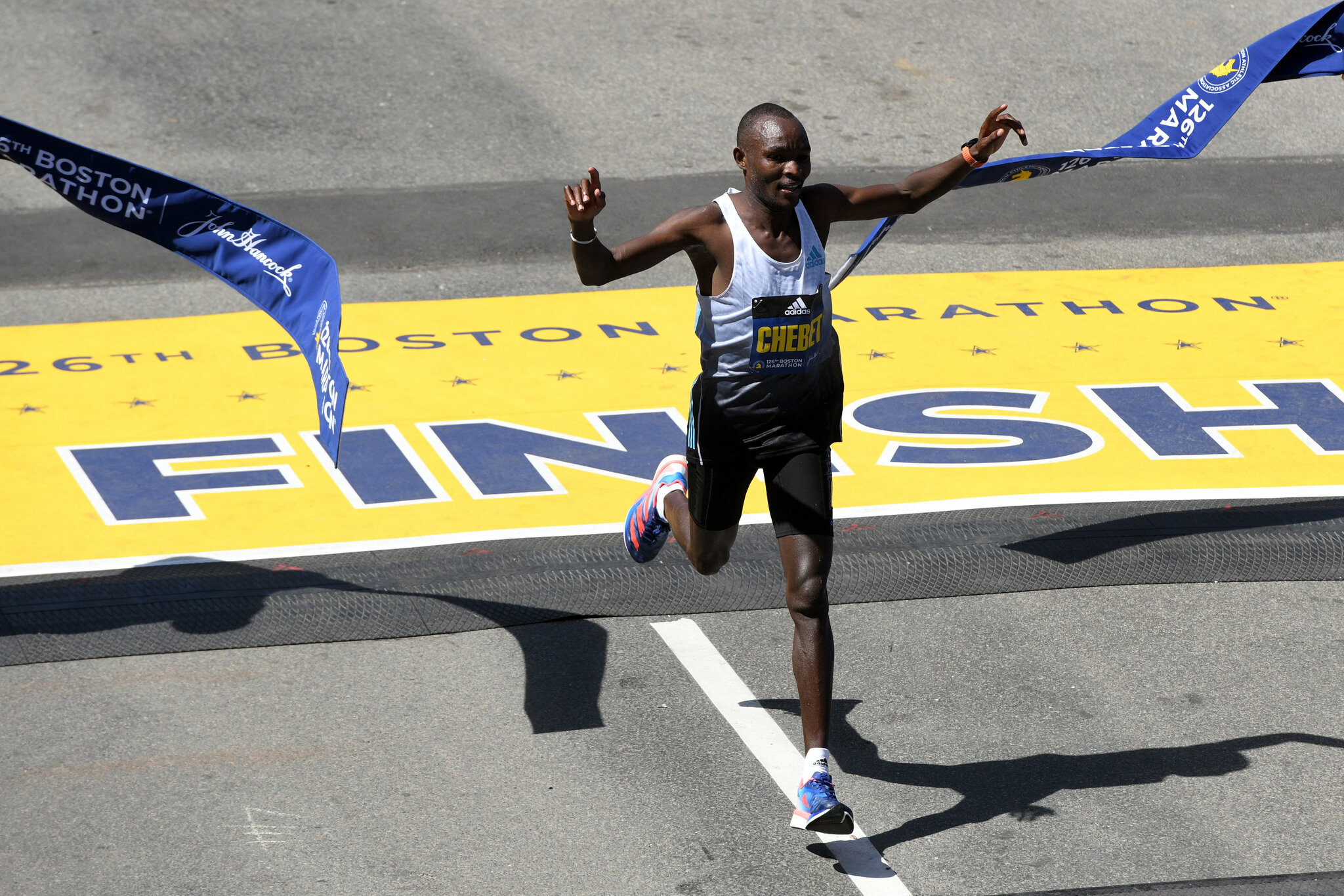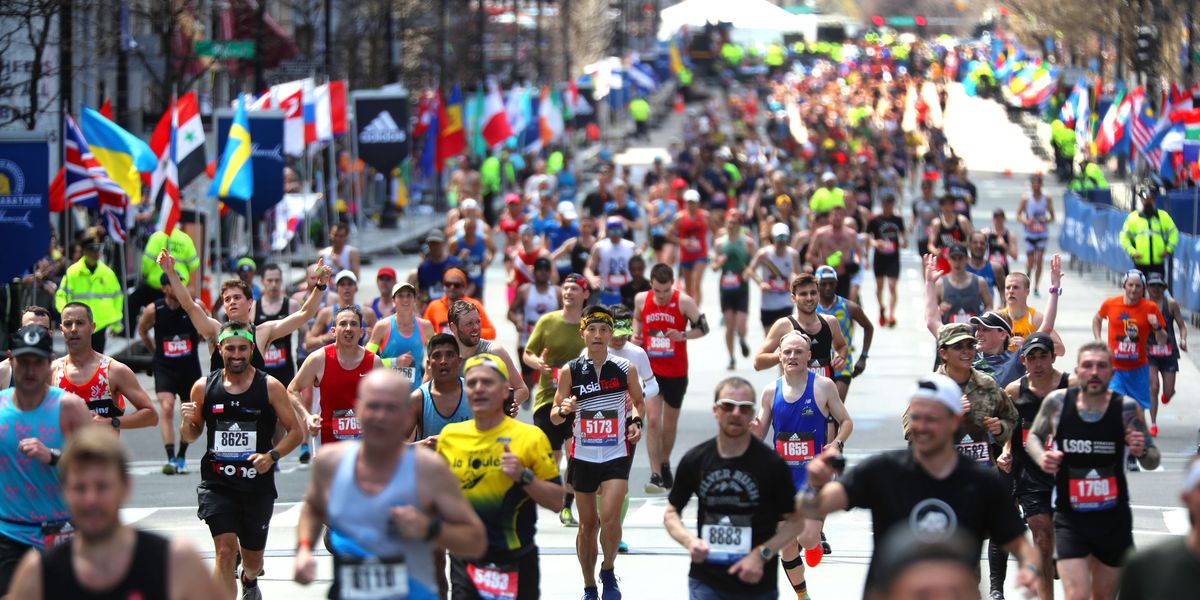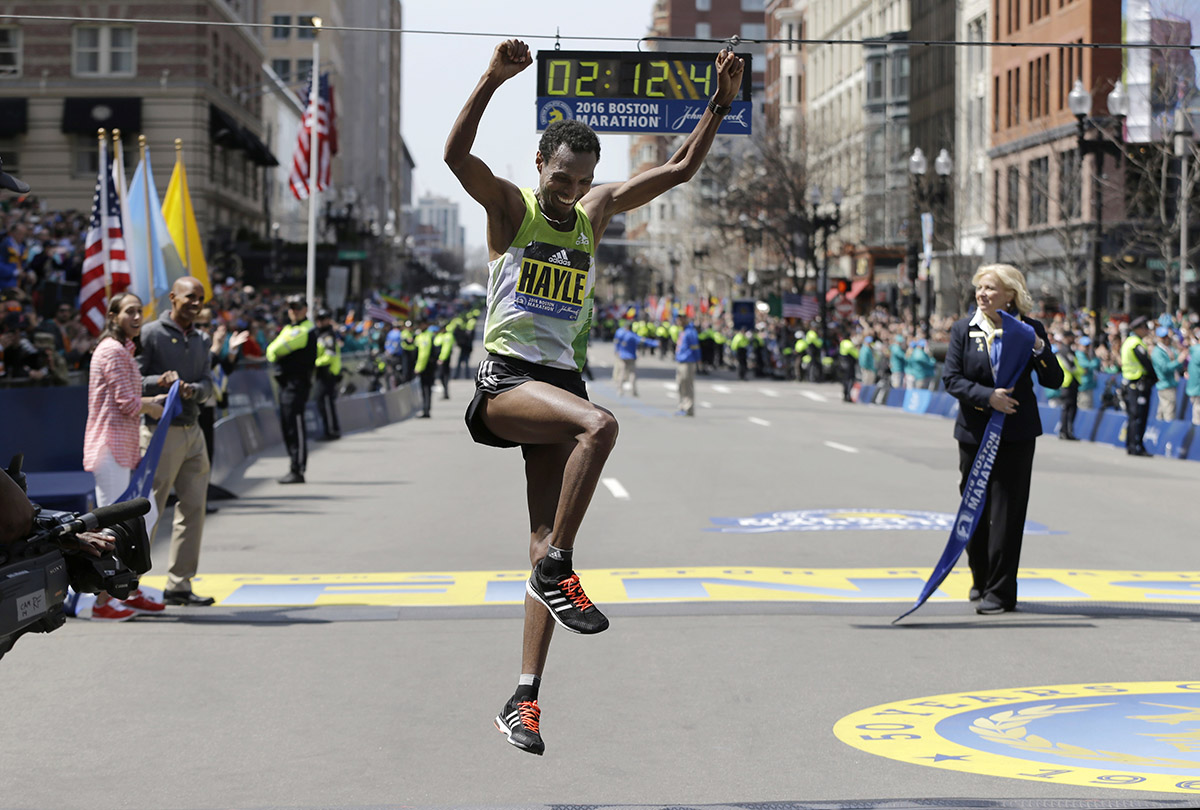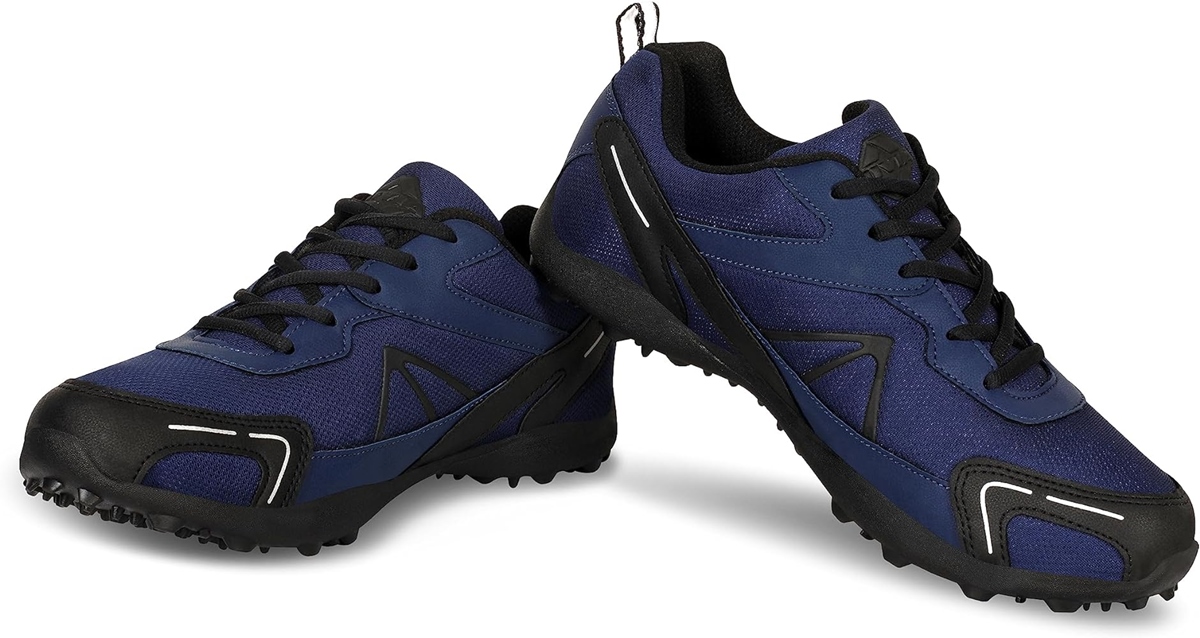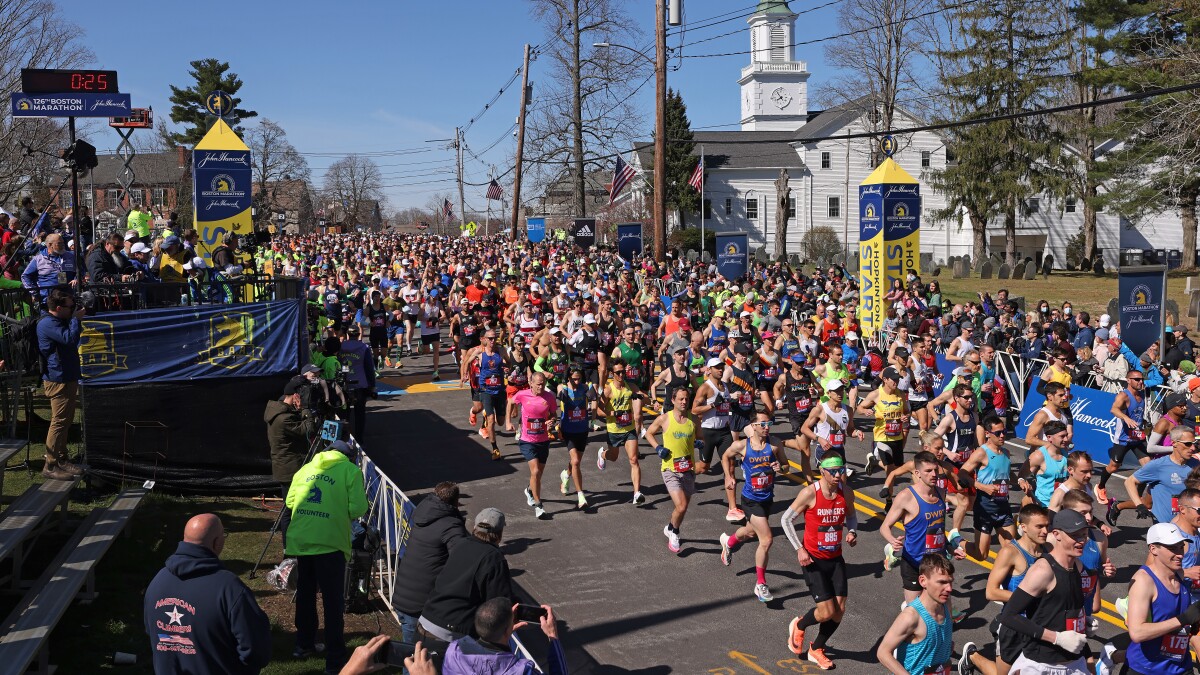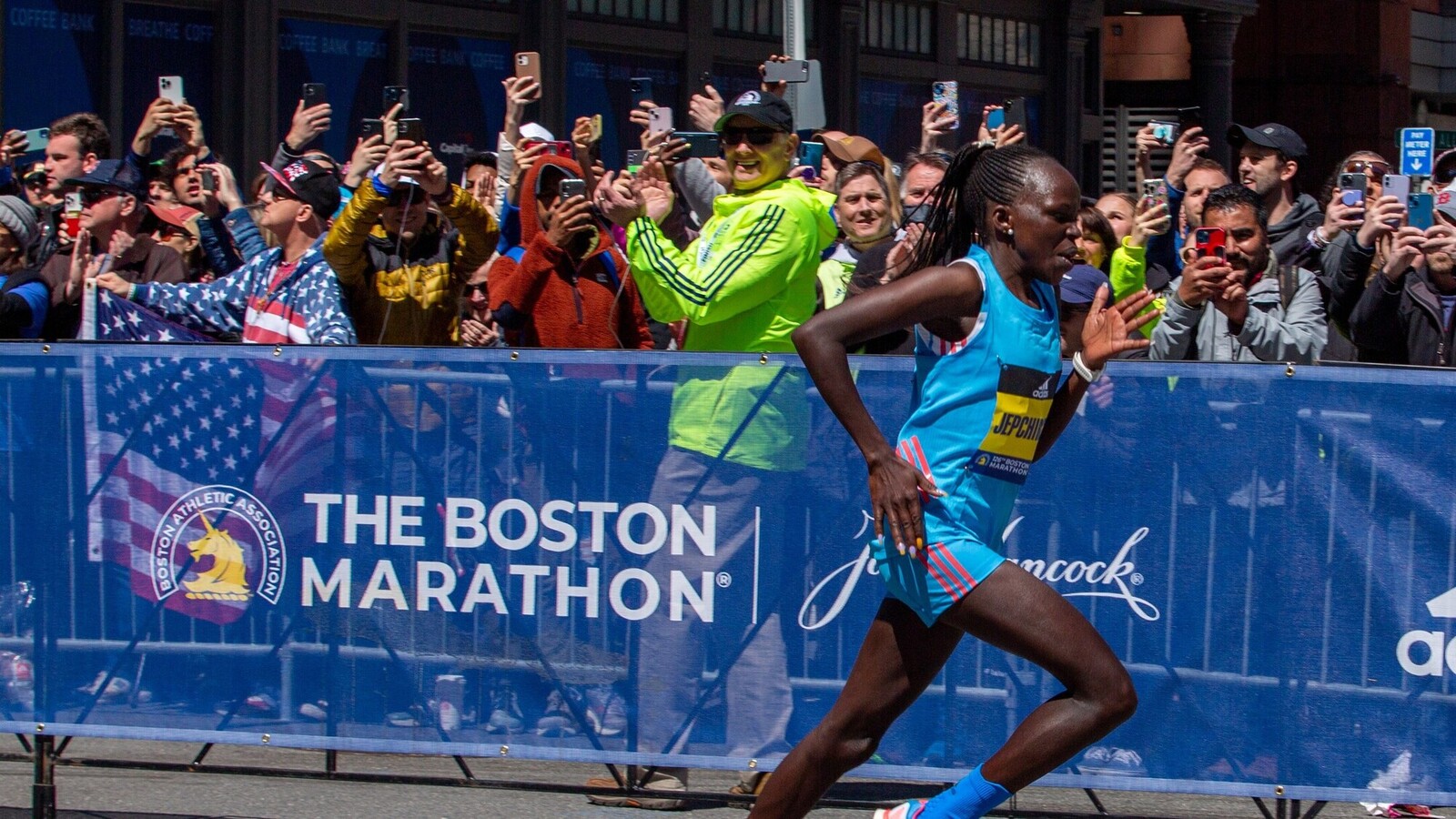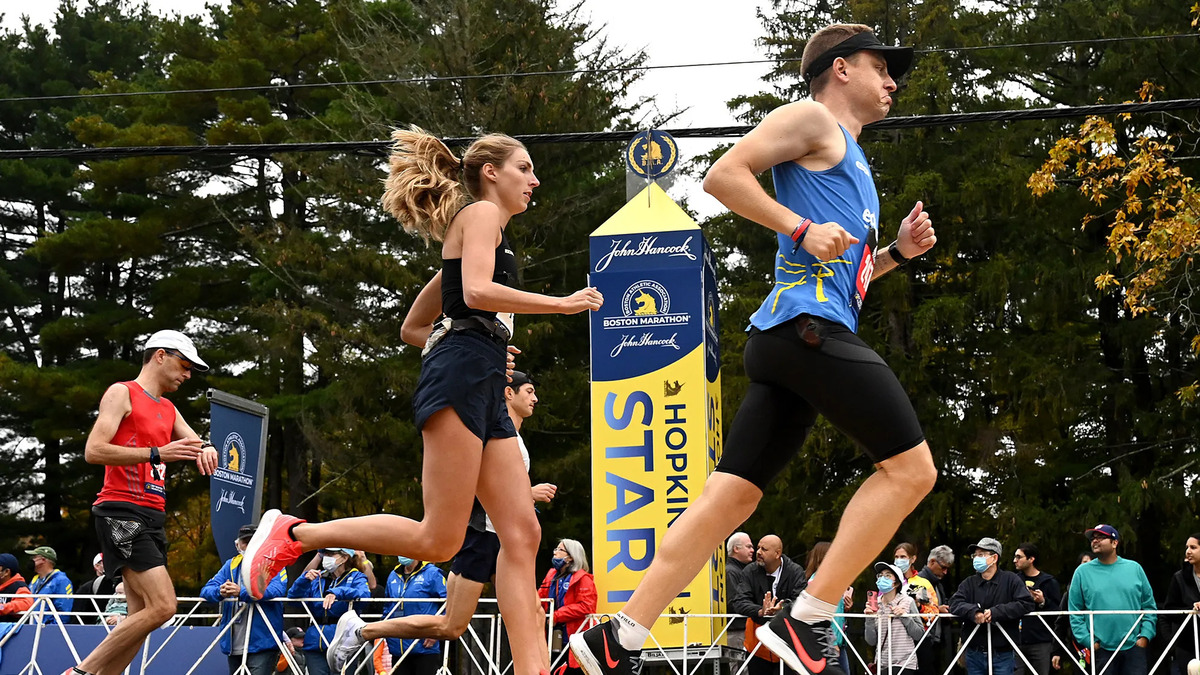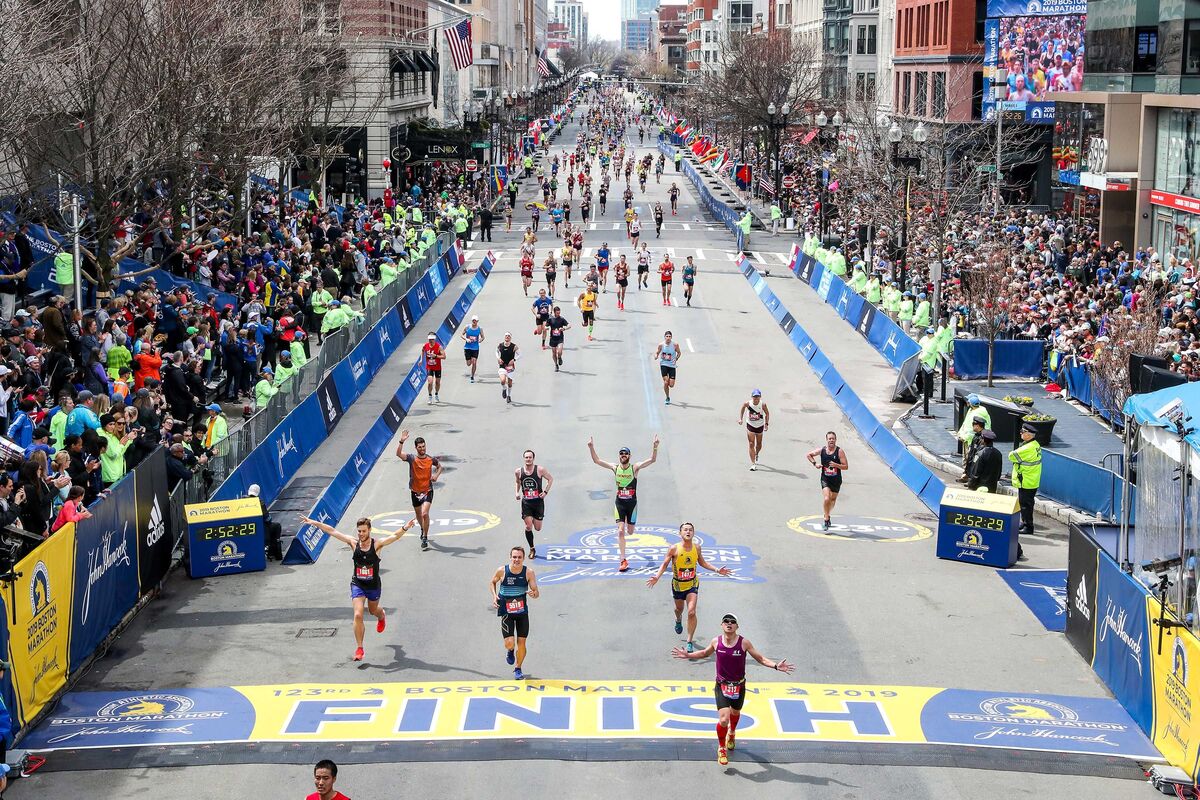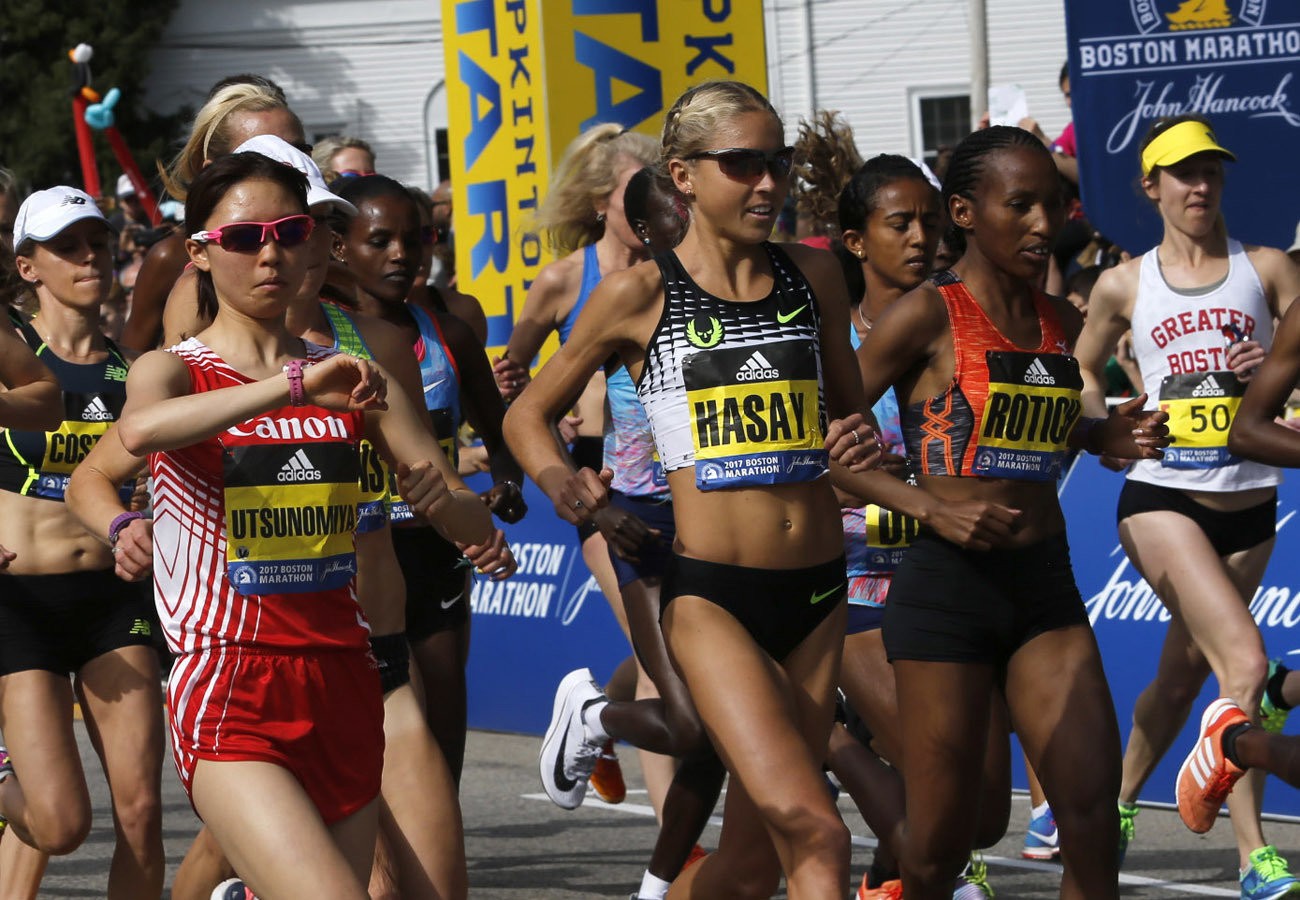

Featured
When Is The 2017 Boston Marathon
Modified: January 22, 2024
Discover when the highly anticipated 2017 Boston Marathon will take place. Don't miss out on the chance to watch this featured event!
Introduction
The Boston Marathon is one of the most prestigious and iconic races in the world, drawing elite runners and passionate spectators from around the globe. Founded in 1897, the marathon has a rich history that spans over a century, making it one of the oldest continuously run marathons in the world. Every year, thousands of participants gather in Boston, Massachusetts to test their endurance and push their limits in this legendary race.
In this article, we will explore the 2017 Boston Marathon, taking a closer look at the event’s history, the route, registration processes, and notable participants. Whether you’re a seasoned runner, a dedicated spectator, or simply curious about this historic race, this article will provide you with everything you need to know about the 2017 Boston Marathon.
The Boston Marathon is not just a race; it’s an experience that brings together a passionate community of runners and supporters. The atmosphere is electric, as the city of Boston comes alive with excitement and anticipation. The marathon is renowned for its challenging course, famous landmarks, and the unwavering support of cheering crowds along the route.
The 2017 Boston Marathon was a highly anticipated event, building on the legacy of its predecessors. The race attracts a mix of elite athletes, amateur runners, and passionate individuals who simply want to conquer the famous 26.2-mile course. With its unique qualifying standards and strict registration process, participating in the Boston Marathon is a dream for many runners.
In the following sections, we will delve into the captivating history of the Boston Marathon, explore the route that the participants had to conquer, discuss the registration requirements, highlight noteworthy participants, and provide valuable information for spectators who wish to join in the festivities. So, buckle up, lace up your running shoes, and get ready to embark on a journey through the exhilarating 2017 Boston Marathon.
History of the Boston Marathon
The Boston Marathon has a storied history that dates back to its inaugural race in 1897. Inspired by the success of the first modern Olympic Games in 1896, Boston Athletic Association member John Graham proposed the idea of organizing a marathon in the United States. The race was scheduled to coincide with the 61st anniversary of the famous Battle of Lexington and Concord, which marked the beginning of the American Revolutionary War.
On April 19, 1897, the first Boston Marathon was held with a field of 15 participants. John J. McDermott, an Irish-American, emerged as the victor, completing the 24.5-mile course from the starting line in Ashland to the finish line in Boston’s Back Bay in just under three hours. As the years went by, the race distance was standardized to the now familiar 26.2 miles.
In 1966, the Boston Marathon made history when Roberta “Bobbi” Gibb became the first woman to run the race. Despite not being officially registered, Gibb disguised herself and joined the male runners, facing skepticism and resistance from race officials. However, her determination and courage paved the way for future generations of women to participate in the marathon. In 1972, women were officially allowed to run the Boston Marathon, and in 1984, the race became part of the prestigious Abbott World Marathon Majors series.
The Boston Marathon has witnessed numerous memorable moments throughout its history. In 1967, the race gained international attention when Kathrine Switzer, a registered participant, was physically attacked by a race official who tried to remove her from the course because women were not allowed to compete. Switzer continued to run and finished the race, inspiring women around the world to break barriers in sports.
Tragedy struck the Boston Marathon on April 15, 2013, when two bombs exploded near the finish line, resulting in the deaths of three individuals and injuring hundreds. The Boston Strong spirit was exemplified in the aftermath of the tragedy, as the city rallied together to support the affected individuals and show resilience in the face of adversity. The marathon, held the following year, saw an even greater outpouring of support as runners and spectators came together in solidarity.
In recent years, the Boston Marathon has continued to attract top-tier athletes from all over the world, as well as thousands of dedicated amateur runners. The race showcases the spirit of endurance and determination, drawing inspiration from its rich history and the city of Boston itself.
Overview of the 2017 Boston Marathon
The 2017 Boston Marathon was an eagerly anticipated event that drew thousands of runners and spectators to the historic city of Boston. Held on April 17, 2017, the race marked the 121st edition of the Boston Marathon. As one of the six major marathons in the world, the Boston Marathon attracts elite athletes and amateur runners from around the globe, all vying for personal achievement and glory.
The 2017 Boston Marathon featured a highly competitive field of runners, with both seasoned veterans and rising stars aiming to conquer the prestigious course. The race comprised various age groups and categories, allowing runners of different abilities and backgrounds to participate and challenge themselves.
Starting in the town of Hopkinton, the racers followed the iconic point-to-point course that winds through eight cities and towns, including Ashland, Framingham, Natick, Wellesley, Newton, Brookline, and finally, Boston. The course is known for its challenging terrain, including the infamous Heartbreak Hill, a series of ascents that test the runners’ physical and mental stamina.
The weather conditions on race day play a significant role in the overall experience and performance of the runners. In 2017, the weather was ideal for marathon running, with clear skies and comfortable temperatures. It provided an optimal environment for participants to showcase their abilities and strive for personal bests.
The 2017 Boston Marathon also served as a celebration of the resilience and strength of the city of Boston. Following the tragic events of the 2013 bombings, security measures were heightened to ensure the safety of all participants and spectators. The marathon became a symbol of unity and determination, embodying the spirit of Boston Strong.
The elite competition in the 2017 Boston Marathon was fierce, with runners from various countries vying for the coveted winners’ titles. The men’s race saw a thrilling finish, with Geoffrey Kirui of Kenya emerging as the champion with a time of 2 hours, 9 minutes, and 37 seconds. In the women’s race, Edna Kiplagat, also from Kenya, triumphed with a time of 2 hours, 21 minutes, and 52 seconds.
Beyond the elite field, the 2017 Boston Marathon was a personal journey for the thousands of dedicated amateur runners who had trained for months, if not years, to qualify and earn their spot in the race. Each participant had their own story of triumph and determination, making the marathon an event that celebrates the human spirit and the pursuit of personal goals.
The 2017 Boston Marathon, like its predecessors, showcased the unique combination of history, athleticism, and community spirit that makes it one of the most revered races in the world. It served as a reminder of the enduring legacy of the Boston Marathon and the indomitable spirit of the runners who take on the challenge year after year.
Date and Time of the 2017 Boston Marathon
The 2017 Boston Marathon took place on Monday, April 17, 2017. The race is traditionally held on Patriots’ Day, a holiday in Massachusetts that commemorates the anniversary of the Battles of Lexington and Concord, which marked the beginning of the American Revolutionary War. This annual event not only showcases the rich history of the marathon but also provides an opportunity for participants and spectators to celebrate the spirit of patriotism and unity.
The 2017 Boston Marathon was a day filled with excitement and anticipation as thousands of runners gathered at the starting line in the town of Hopkinton, Massachusetts. The race typically begins in waves, with different groups of runners starting at designated times to avoid overcrowding on the course. This ensures a smooth and safe running experience for all participants.
The starting time for the 2017 Boston Marathon varied depending on the participant’s qualifying time and age group. The first wave of runners, comprised of the fastest qualifiers, began at 9:32 am ET, while subsequent waves followed in staggered intervals. This organized start allows for a fair and competitive race, as runners are grouped with others of similar abilities.
The timing of the Boston Marathon holds significance not only for the participants but also for the spectators who line the route to cheer on the runners. Patriots’ Day is a state holiday in Massachusetts, which means many individuals have the day off work or school, allowing them to fully immerse themselves in the marathon experience. Families, friends, and members of the community come together to support and cheer on the participants as they make their way through the iconic course.
The race day atmosphere is electric, with spectators lining the streets from Hopkinton to Boston, offering encouragement and motivation to the runners. The cheering crowds create a carnival-like atmosphere, with music, banners, and signs cheering on the participants. Spectators also take advantage of the holiday to host cookouts, picnics, and gatherings along the route, creating a festive atmosphere that adds to the overall excitement of the day.
The 2017 Boston Marathon was a significant event in the running calendar, with its date and time carefully chosen to coincide with Patriots’ Day. This alignment of history, tradition, and community spirit is what makes the race so unique and special. Whether you were a runner participating in the marathon or a spectator lining the route, the 2017 Boston Marathon was a memorable event that celebrated the endurance, determination, and camaraderie of all involved.
Route of the 2017 Boston Marathon
The route of the 2017 Boston Marathon is etched into the history of the race, encompassing a challenging yet iconic course that showcases the beauty of Massachusetts. The marathon route spans a distance of 26.2 miles (42.195 kilometers) and winds its way through eight cities and towns, starting in Hopkinton and culminating in the heart of Boston.
The race begins in Hopkinton, a town located west of Boston. Runners gather at the starting line, which is divided into different waves based on qualifying times and age groups. As the starting horn sounds, runners embark on their journey towards Boylston Street, the iconic finish line in Boston.
The first few miles of the 2017 Boston Marathon take runners through the town of Hopkinton and into Ashland, where they join Route 135. From there, the course enters Framingham, where enthusiastic spectators line the streets, offering support and encouragement to the runners. As the race continues, it proceeds through the towns of Natick and Wellesley, where the famous “Scream Tunnel” awaits. This stretch of the race features enthusiastic Wellesley College students cheering on the participants with exuberance and energy.
After Wellesley, the course enters Newton, where the notorious Newton hills await the runners. The series of four hills, including the formidable Heartbreak Hill, test the endurance and mental fortitude of the participants. Overcoming these challenging climbs is a significant milestone for all runners.
As the participants reach the top of Heartbreak Hill, they make their way into the city of Brookline, where crowds of spectators line the streets, offering cheers of encouragement. The final stages of the course take the runners along Beacon Street, past iconic landmarks such as Fenway Park, and into the bustling city of Boston.
The homestretch of the 2017 Boston Marathon takes runners down Boylston Street, as they approach the coveted finish line. The cheers of the crowd fill the air, providing a surge of energy and adrenaline for the exhausted but determined runners. Crossing the finish line on Boylston Street is a moment of triumph and celebration, representing the culmination of months of training and dedication.
The route of the 2017 Boston Marathon encapsulates the essence of the race, combining historic landmarks, challenging terrain, and unwavering spectator support. It is a course that demands physical and mental strength, and the journey from Hopkinton to Boston is a testament to the endurance and determination of all participants.
Registration and Entry Requirements
Participating in the Boston Marathon is a dream for many runners, but it requires meeting specific registration and entry requirements. The race has a unique qualification process, adding to its prestige and exclusivity. Here, we will explore the registration process and the entry requirements for the 2017 Boston Marathon.
To be eligible for the Boston Marathon, runners must first achieve a qualifying time in a previous marathon. The qualifying standards are based on age and gender and must be achieved on a certified marathon course. The qualifying window for the 2017 Boston Marathon opened approximately 18 months before the race, providing runners with ample time to train and strive for their qualifying time.
Once a runner has obtained a qualifying time, they must submit their application during the designated registration period. The Boston Athletic Association (BAA), which organizes the marathon, uses a rolling admission process, prioritizing runners who have achieved times significantly faster than their qualifying standard. This ensures a fair and efficient registration process, as spots are limited due to the high demand for participation.
The registration period for the 2017 Boston Marathon typically opens in September of the previous year, and runners have several weeks to submit their applications. It’s important to note that meeting the qualifying standards does not guarantee entry into the race, as the number of qualifying runners often exceeds the available spots. The BAA implements a cutoff time for registration, accepting runners based on the number of available entries and the qualification times submitted.
The cost of entry into the Boston Marathon varies each year and is subject to change. The registration fee covers various amenities and services provided to the participants, including a participant bib, official race program, post-race refreshments, and a finisher’s medal. In addition, runners have the option to purchase commemorative merchandise and access additional race-related events and activities.
The registration process for the Boston Marathon emphasizes the importance of maintaining the integrity and competitiveness of the race. It ensures that participants have put in the necessary dedication and training to qualify and be part of this iconic event. The rigorous qualification standards and the rolling admission system help maintain the high standards of the Boston Marathon, making it one of the most prestigious races in the world.
For those who do not meet the entry requirements or wish to support the race without running, there is an option to participate as a charity runner. Various organizations affiliated with the Boston Marathon offer charity entries, allowing individuals to raise funds for a worthy cause while participating in the race. Running for a charity provides an alternative path to experience the excitement of the Boston Marathon and contribute to the local community.
The registration and entry requirements for the 2017 Boston Marathon exemplified the race’s commitment to excellence and showcased the dedication and hard work of all participants. It is a marathon that holds a special place in the hearts of runners worldwide, rewarding those who have gone the extra mile to achieve their qualifying times and earn their spot in this historic and prestigious event.
Prize Money and Awards
The 2017 Boston Marathon not only serves as a platform for personal achievements but also offers substantial prize money and recognition to the top performers. The race rewards the dedication and hard work of the elite athletes who push themselves to the limits, battling it out for the victory on the historic course.
The prize money for the 2017 Boston Marathon was substantial, with a total purse of $830,500 awarded across various categories. The top male and female finishers received a substantial cash prize, with the winners each taking home $150,000. In addition to the cash prize, the champions were awarded an exquisite laurel wreath and a customized trophy, solidifying their place in the annals of Boston Marathon history.
The prize money extended beyond the overall winners, with cash rewards for the top finishers in various age groups and categories. The top three male and female runners in the open divisions, as well as in the masters’ divisions (40 years and older), received cash prizes ranging from $15,000 to $30,000, recognizing their outstanding performances.
Alongside the cash prizes, the Boston Marathon presents unique symbols of recognition for the top finishers. The infamous “B.A.A. Unicorn” trophy is awarded to the top male and female American runners, signifying their achievement as the fastest American participants. This traditional trophy has become a prestigious symbol within the running community and is highly coveted by American athletes.
The Boston Marathon also acknowledges the spirit of competition among athletes with mobility impairments. The top male and female finishers in the wheelchair division receive prize money and a specially designed trophy. This division showcases the extraordinary athleticism and determination of these athletes, adding to the inclusivity and diversity of the marathon.
In addition to the monetary rewards and trophies, all finishers of the Boston Marathon receive a commemorative medal as a symbol of their accomplishment. The medal is a cherished memento and serves as a reminder of the dedication and perseverance required to complete the challenging course. Many runners proudly display their collection of Boston Marathon medals as a testament to their dedication and commitment to the sport.
The prize money and awards offered at the 2017 Boston Marathon served as incentives and recognition for the elite athletes who showcased their exceptional abilities on the historic course. These rewards not only validate the efforts of the top finishers but also inspire future generations of runners to dream big and strive for greatness.
Beyond the material rewards, the Boston Marathon embodies the spirit of competition, camaraderie, and personal achievement. For many participants, crossing the finish line and completing the race is a victory in itself, regardless of the awards earned. The Boston Marathon is an event that celebrates the human spirit, pushing boundaries and inspiring individuals to push beyond their limits.
Notable Participants in the 2017 Boston Marathon
The 2017 Boston Marathon attracted a diverse and talented group of runners, including both elite athletes and inspirational individuals with incredible stories. The race celebrated the achievements and determination of these notable participants, showcasing their dedication to the sport and their personal journeys of triumph.
One of the stand-out participants in the 2017 Boston Marathon was Meb Keflezighi, an American long-distance runner and Olympic medalist. Keflezighi, who won the Boston Marathon in 2014, returned once again to compete and inspire others. At 41 years of age, he demonstrated his remarkable endurance and placed 13th overall, leaving a lasting impression on spectators and fellow competitors alike.
Another notable participant was Kathrine Switzer, the first woman to officially run the Boston Marathon in 1967. Switzer returned in 2017, commemorating the 50th anniversary of her historic run. At the age of 70, she completed the marathon, serving as an inspiration to women of all ages and demonstrating the progress made in promoting gender equality in sports.
The 2017 Boston Marathon also saw the participation of numerous charity runners, who ran to raise awareness and funds for various causes. These individuals embody the spirit of giving back and use the marathon as a platform to make a positive impact on society. Their dedication and perseverance serve as a reminder of the transformative power of running.
Among the participants were survivors of the 2013 Boston Marathon bombings, who courageously returned to run the race and complete the course. These individuals symbolize the resilience and strength of the human spirit, inspiring others to overcome adversity and never give up on their dreams.
Additionally, the 2017 Boston Marathon featured a significant presence of international elite athletes, representing different countries and bringing their formidable skills to the race. These athletes showcased their exceptional talent, engaging in thrilling competitions and pushing each other to new heights.
The notable participants in the 2017 Boston Marathon, whether they were elite athletes, inspiring individuals, or survivors, brought a unique energy and spirit to the race. Their stories of determination, courage, and perseverance serve as reminders of the transformative power of the Boston Marathon and the impact it has on individuals and communities worldwide.
The diverse range of participants in the 2017 Boston Marathon exemplified the inclusivity and camaraderie that the marathon fosters. From elite athletes to everyday runners, each participant had their own journey and personal reasons for taking on the challenge. Regardless of their backgrounds or abilities, all participants contributed to the rich tapestry of stories that make the Boston Marathon a truly remarkable and inspiring event.
Spectator Information for the 2017 Boston Marathon
The 2017 Boston Marathon not only attracted thousands of dedicated runners but also brought together a vibrant and enthusiastic community of spectators. Whether you were a friend or family member supporting a loved one or a passionate fan cheering on the participants, being a spectator at the Boston Marathon offered a unique and unforgettable experience. Here is some key information to enhance your spectating experience at the 2017 Boston Marathon.
Choosing the right viewing spot is crucial to fully immerse yourself in the energy and excitement of the race. Spectators can line the course from start to finish, cheering on the runners at various points along the route. Popular and iconic spots include the start in Hopkinton, the thrilling Newton Hills, and the final stretch on Boylston Street in Boston. It’s important to plan ahead and arrive early to secure a good viewing spot, as popular locations can become crowded as the race progresses.
To ensure a smooth and enjoyable experience, it’s important to familiarize yourself with the race route and the schedule. The 2017 Boston Marathon started in waves, with different groups of runners beginning at designated times. Ensure that you know the estimated times that runners will pass through specific locations, so you don’t miss the opportunity to cheer on your favorite participants.
Bringing signs, banners, and noise-makers can add to the festive atmosphere of the marathon. Colorful and creative signs not only offer encouragement to the runners but can also serve as a memorable keepsake for them to cherish. Making personalized signs for your friends, family members, or even strangers can make a positive impact and inspire the participants as they make their way towards the finish line.
Being a spectator at the Boston Marathon is not just about cheering for the runners but also about creating a positive and inclusive atmosphere. It’s important to respect the race course and other spectators by following any guidelines or instructions from race officials or security personnel. Keeping the course clear and supporting all participants, regardless of ability or background, helps create an inclusive environment that reflects the values of the marathon.
Lastly, don’t forget to capture the moments and memories of the day. Bring a camera or smartphone to document the inspiring and emotional moments along the course. Tagging your photos and posts on social media with relevant hashtags, such as #BostonMarathon or #BostonStrong, allows you to share your experience with a broader community of running enthusiasts and supporters.
The 2017 Boston Marathon was not just a race; it was a celebration of endurance, determination, and community spirit. Being a spectator at this iconic event offered a front-row seat to witness incredible athletic feats and to be part of an inspiring and memorable event. So, gather your friends and family, plan your viewing spots, and get ready to cheer on the participants as they embark on their remarkable journey through the historic streets of Boston.
Conclusion
The 2017 Boston Marathon was a testament to the enduring legacy and spirit of this historic race. From its humble beginnings in 1897 to its status as one of the world’s most renowned marathons, the Boston Marathon continues to captivate and inspire runners and spectators alike. The 2017 edition was no exception, with elite athletes showcasing their prowess, remarkable stories unfolding, and the incredible support of the community on full display.
The marathon’s rich history and challenging course provide a backdrop for personal triumph and collective celebration. It is a race that honors tradition, commemorates the past, and looks forward to the future. The 2017 Boston Marathon exemplified the resilience, determination, and camaraderie that have come to define this iconic event.
The race would not be possible without the dedication and organization of the Boston Athletic Association, as well as the countless volunteers and supporters who contribute to its success. The commitment to excellence in every aspect, from registration to participant amenities, ensures that the Boston Marathon maintains its reputation as a world-class event.
For the runners, the Boston Marathon represents the culmination of months, if not years, of training and preparation. It is a victory of the mind, body, and spirit. The race challenges their physical limits, tests their mental fortitude, and rewards them with a sense of accomplishment that lasts a lifetime. The 2017 Boston Marathon showcased the remarkable performances of both elite athletes and dedicated amateur runners, each achieving their personal milestones and pushing their boundaries.
For the spectators, the Boston Marathon is an opportunity to be part of a shared experience, to cheer on friends, family, and strangers, and to witness the remarkable achievements of the participants. The race brings together a diverse community of supporters, creating an electric atmosphere that reverberates through the cities and towns along the course.
The 2017 Boston Marathon was a celebration of endurance, determination, and community spirit. It embodied the ideals of unity, triumph over adversity, and the power of the human spirit to overcome challenges. The event left an indelible mark on all those involved, reinforcing the Boston Marathon’s place as a beacon of inspiration and resilience in the world of sports.
As we reflect on the 2017 Boston Marathon, we recognize the impact it has on the lives of the participants and the communities it touches. It serves as a reminder that with dedication, perseverance, and a supportive community, remarkable achievements are possible. Whether running or spectating, the Boston Marathon is an experience that leaves a lasting impression and inspires individuals from all walks of life to push beyond their limits and reach for their dreams.
